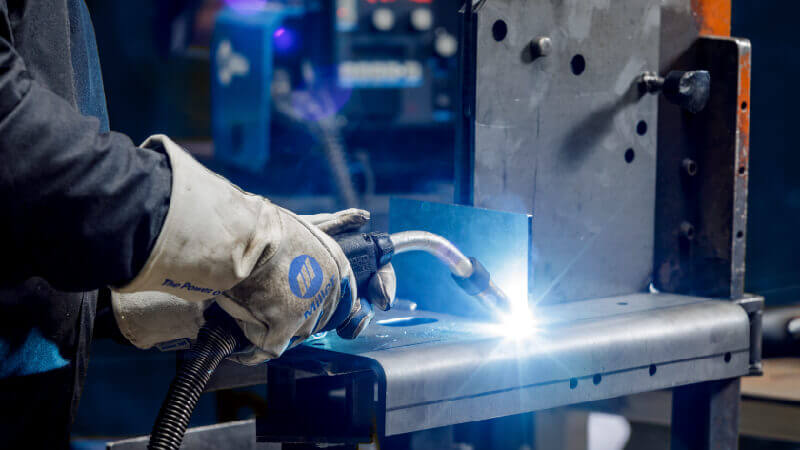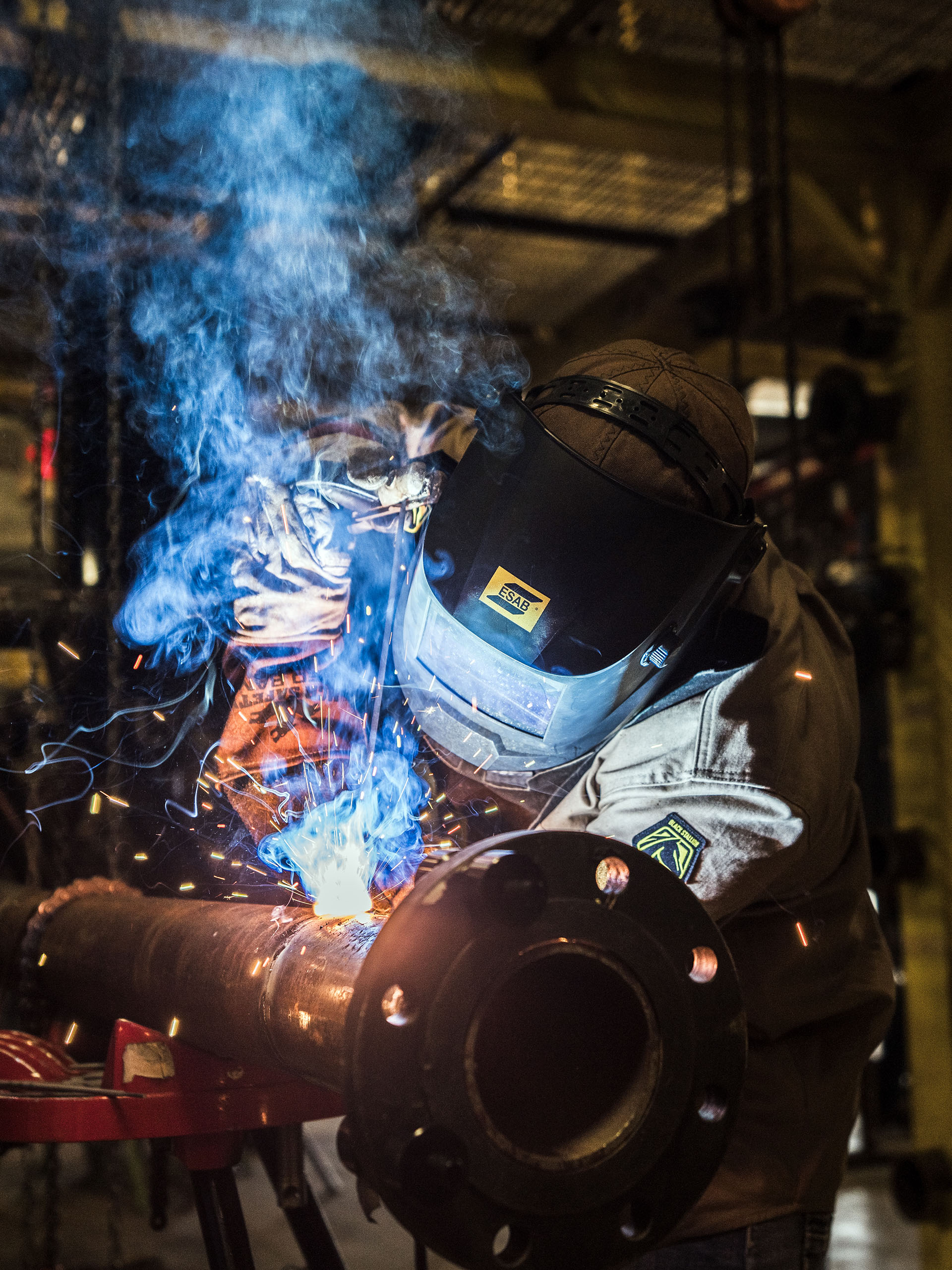Typical Welding Repair Work Issues and Exactly How to Address Them Effectively
Welding repair services usually encounter a range of concerns that can threaten the stability of the end product. Typical issues consist of poor infiltration, porosity, and imbalance, amongst others. Each problem provides unique difficulties that require details strategies for resolution. Recognizing these issues is necessary for welders aiming to boost their abilities and end results. This conversation will certainly discover these typical welding repair service issues and efficient techniques to address them.
Insufficient Infiltration
Inadequate infiltration happens when the weld metal falls short to completely fuse with the base product, leading to weak joints and potential architectural failures. This concern frequently stems from insufficient heat input, inaccurate electrode angle, or improper welding speed. Welders may run into poor penetration because of a miscalculation of the needed specifications for a certain material density or type. In addition, contamination on the base product's surface area can hinder reliable bonding, aggravating the trouble. To address insufficient penetration, welders must assure ideal settings on their devices and keep a tidy work surface. Routine evaluation of welds is recommended to recognize any deficiencies early, permitting timely adjustments and the prevention of endangered structural stability in welded assemblies.
Porosity
Porosity is a typical issue in welded joints that manifests as little gas bubbles caught within the weld metal. This issue can endanger the stability of the weld, resulting in minimized stamina and prospective failing under anxiety. Montana Mobile Welding and Repair Belgrade. Porosity usually occurs from contamination, wetness, or improper welding strategies, which enable gases to get away into the liquified weld swimming pool. To attend to porosity, welders should guarantee appropriate surface prep work, keep a clean functioning setting, and utilize appropriate welding parameters. Additionally, selecting the right filler material and shielding gas can alleviate gas entrapment. Normal evaluation and testing of welds can aid recognize porosity early, guaranteeing prompt rehabilitative actions are taken, therefore maintaining the high quality and dependability of the bonded structure
Imbalance
Imbalance in welding can develop from various variables, including inappropriate arrangement and thermal expansion. Understanding the source is important for efficient resolution. A number of adjustment methods are available to realign components and guarantee architectural honesty.
Root causes of Misalignment
Welding misalignment typically comes from a range of underlying problems that can compromise architectural stability. One primary reason is inappropriate fit-up of elements prior to welding, which can result in voids and unequal surface areas. Variants in thermal development during the welding process can likewise result in distortion, especially if the products being joined have different coefficients of growth. In addition, poor fixturing and clamping might fail to hold parts securely in position, bring about movement during welding. Improperly conserved equipment, consisting of welding makers and devices, may present incongruities in the weld bead, more adding to misalignment. Operator mistake, stemming from insufficient training or experience, can likewise play a significant function in developing misaligned welds.

Improvement Methods Available
Attending to imbalance successfully needs a mix of restorative methods tailored to the certain issues handy. One typical approach is making use of fixtures or jigs to hold parts in the correct setting throughout welding, making certain constant placement. Additionally, preheating the products can help in reducing distortion and enhance fit-up. For considerable misalignment, mechanical realignment techniques, such as using hydraulic jacks or clamps, can be used to correct the position prior to welding. Post-weld warm therapy might also be essential to eliminate stresses brought on by imbalance. Mindful assessment and change throughout the configuration phase can protect against imbalance issues from coming to be considerable troubles, advertising a smoother welding process and improving overall architectural integrity.
Distortion
Distortion is a typical challenge in welding that can emerge from various aspects, including irregular heating & cooling. Comprehending the sources of distortion is essential for carrying out reliable prevention strategies. Addressing this concern not just boosts architectural integrity yet additionally boosts the overall top quality of the weld.
Sources of Distortion
When based on the intense warmth of welding, materials usually go through changes that can cause distortion. This sensation largely emerges from thermal expansion and contraction during the welding procedure. As the weld area warms up, the material expands; upon air conditioning, it gets, which can produce interior anxieties. Furthermore, irregular home heating throughout a work surface can aggravate these stress and anxieties, resulting in bending or bending. The kind of product also plays a considerable duty; metals with varying thermal conductivity and coefficients of growth might respond in a different way, resulting in unforeseeable distortions. In addition, poor joint design and insufficient fixturing can contribute to misalignment throughout welding, increasing the likelihood of distortion. Comprehending these causes is crucial for reliable welding fixing and avoidance methods.
Prevention Techniques
Reliable prevention techniques for distortion during welding emphasis on managing heat input and ensuring correct joint style. Maintaining a regular warm input assists to decrease thermal growth and tightening, go which can bring about distortion. Using strategies such as pre-heating the work surface can likewise decrease the temperature level slope, promoting uniform home heating. Additionally, selecting proper joint styles, such as T-joints or lap joints, can improve stability and reduce anxiety concentrations. Applying appropriate fixturing to safeguard the workpieces in position better help in maintaining alignment during the welding process. Staggered welding series can distribute warmth much more equally, stopping local distortion. By using these strategies, welders can substantially lower the probability of distortion and improve the overall high quality of their welds.
Fracturing
Fracturing is a common issue experienced in welding repairs, typically arising from different variables such as improper air conditioning prices, material option, or poor joint preparation. The occurrence of splits can greatly jeopardize the stability of the weld, leading to potential failings during operation. To resolve this problem, welders should initially analyze the source, guaranteeing that materials work and suitably selected for the certain application. Furthermore, controlling the air conditioning rate during the more helpful hints welding process is crucial; fast cooling can induce stress and anxiety and lead to breaking. Correct joint layout and prep work also add to decreasing the risk. Carrying out these methods can improve weld high quality and sturdiness, eventually lowering the possibility of splitting in completed weldments.

Incomplete Combination
A considerable problem in welding repair services is insufficient combination, which occurs when the weld metal does not effectively bond with the base material or previous weld passes - Welding. This issue can lead to weaknesses in the joint, potentially endangering the integrity of the welded structure. Aspects adding to insufficient combination include insufficient warmth input, inappropriate welding strategy, and contamination of the surface areas being joined. To address this issue efficiently, welders ought to guarantee proper pre-weld cleansing and surface preparation, in addition to change their welding parameters to attain ample penetration and fusion. Normal assessment throughout the welding procedure can additionally assist recognize incomplete combination early, enabling timely rehabilitative procedures to enhance the general quality of the weld
Overheating
While welding repair work can improve architectural stability, overheating presents a substantial difficulty that can bring about material degradation. Extreme heat during welding can change the mechanical buildings of metals, resulting in lowered toughness, increased brittleness, and warping. This sensation is especially critical in high-stress applications where architectural reliability is critical. Identifying overheating can involve aesthetic assessments for staining or distortion, along with checking temperature during the welding process. To minimize the dangers connected with overheating, welders must employ suitable techniques, such as regulating warm input, readjusting traveling rate, and utilizing suitable filler materials. Additionally, carrying out pre- and post-weld warmth therapies can help restore material residential properties and useful content enhance the total top quality of the repair work, making sure long-term performance and safety.
Often Asked Inquiries
What Are the Typical Indications of a Welding Issue?

Exactly How Can I Examine My Welds for Quality?
To check welds for quality, one can utilize visual assessments, ultrasonic screening, and radiographic approaches. Each technique guarantees structural honesty, identifies issues, and verifies adherence to specified standards, eventually enhancing the integrity of the welded joints.
What Safety Precautions Should I Take While Welding?
When welding, one must prioritize safety and security by wearing appropriate personal safety tools, guaranteeing proper ventilation, safeguarding flammable materials away, preserving a tidy office, and recognizing environments to prevent crashes and injuries.
Can I Fix a Weld Without Redesigning the Entire Joint?
Repairing a weld without redoing the entire joint is possible, relying on the damages (Montana Mobile Welding and Repair Welding). Techniques such as grinding, including filler product, or utilizing a welding procedure can successfully resolve details imperfections while maintaining the surrounding framework
What Tools Are Vital for Reliable Welding Fixes?
Important tools for efficient welding repair services consist of a welding device, cord brush, mill, safety equipment, clamps, and filler products. Each tool plays a vital duty in making sure top quality and safety throughout the repair work procedure. Porosity normally occurs from contamination, moisture, or incorrect welding methods, which permit gases to get away right into the molten weld swimming pool. Improperly maintained equipment, consisting of welding makers and devices, may introduce disparities in the weld bead, further adding to misalignment. When subjected to the extreme warmth of welding, products commonly undertake adjustments that can lead to distortion. Splitting is an usual concern encountered in welding repair work, often resulting from various factors such as improper cooling prices, product choice, or poor joint prep work. A substantial problem in welding repair services is insufficient blend, which takes place when the weld steel does not sufficiently bond with the base product or previous weld passes.